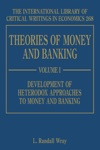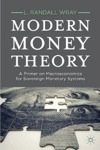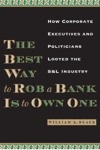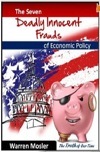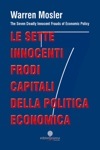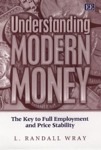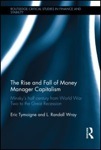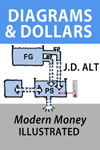U.S. SECURITIES AND EXCHANGE COMMISSION
Litigation Release No. 21696 / October 15, 2010
Securities and Exchange Commission v. Brian N. Lines, Scott G.S. Lines, LOM (Holdings) Ltd., Lines Overseas Management Ltd., LOM Capital Ltd., LOM Securities (Bermuda) Ltd., LOM Securities (Cayman) Ltd., LOM Securities (Bahamas) Ltd., Anthony W. Wile, Wayne E. Wile, Robert J. Chapman, William Todd Peever, Phillip James Curtis, and Ryan G. Leeds, 1:07-CV-11387 (DLC) (S.D.N.Y., filed Dec. 19, 2007)
Court Enters Final Judgments against Brian N. Lines, Scott G.S. Lines, Anthony W. Wile, Wayne E. Wew (formerly Wayne E. Wile), Lines Overseas Management Ltd., LOM Securities (Bermuda) Ltd., LOM Securities (Bahamas) Ltd., LOM Securities (Cayman) Ltd., and LOM Capital Ltd. in Market Manipulation Case
The Securities and Exchange Commission today announced that the Honorable Denise Cote of the United States District Court for the Southern District of New York entered judgments of permanent injunction and other relief against Brian N. Lines, Scott G.S. Lines, Anthony W. Wile, Wayne E. Wew, Lines Overseas Management Ltd., LOM Securities (Bermuda) Ltd., LOM Securities (Bahamas) Ltd., LOM Securities (Cayman) Ltd., and LOM Capital Ltd. on October 15, 2010. (The LOM companies collectively are referred to hereinafter as the “LOM Entities”). All of the foregoing defendants, with the exception of LOM Securities (Bahamas) Ltd. and LOM Securities (Cayman) Ltd., were enjoined by the Court from violating certain of the antifraud provisions of the federal securities laws, as described below. The Court also ordered broad ancillary relief against the defendants, including as to certain defendants, disgorgement, civil money penalties, and compliance with undertakings to not trade in penny stocks quoted on certain U.S.-based electronic quotation services and, for the LOM Entities, to not maintain accounts for U.S.-resident customers. Brian and Scott Lines and the LOM Entities were ordered to disgorge over $1.9 million in profits and prejudgment interest and pay civil penalties totalling $600,000.
Without admitting or denying the Commission’s allegations, the defendants consented to the entry of the judgments against them. These judgments resolve the Commission’s claims against these defendants in a civil action that was filed on December 19, 2007, in which the Commission alleged that that these defendants had participated in a fraudulent scheme to manipulate the stock price of Sedona Software Solutions, Inc. (“SSSI”), and, except for Wile and Wew, also had participated in a second stock manipulation scheme involving SHEP Technologies, Inc. (“SHEP”) f/k/a Inside Holdings Inc. (“IHI”).
In addition to entering permanent injunctions, the Court ordered Brian and Scott Lines, who are brothers and during the relevant time were the controlling persons of the LOM Entities, to pay, jointly and severally with the LOM Entities, disgorgement of $1,277,403, prejudgment interest of $654,918. The Court also imposed civil penalties in the following amounts: $450,000 for the LOM Entities, $100,000 for Brian Lines; and $50,000 for Scott Lines. In addition to entering permanent injunctions against Anthony Wile and Wayne Wew, the Court ordered Wile to pay a civil penalty in the amount of $35,000, and Wew to disgorge approximately $8000 and pay a $10,000 civil penalty.
In its Complaint in the civil action, the Commission alleged that, in early 2002, Brian and Scott Lines assisted two LOM customers, defendants William Todd Peever and Phillip James Curtis, to secretly acquire a publicly-traded OTCBB shell company named Inside Holdings, Inc. (“IHI”). Peever and Curtis then arranged for a reverse merger of IHI with SHEP Ltd., a private company that purportedly owned certain intellectual property. Peever and Curtis paid three touters to publish a series of highly positive reports recommending investments in the newly-merged entity, SHEP Technologies, Inc. The Commission’s complaint alleged, in pertinent part, that during the first half of 2003, Peever, Curtis, and the Lines brothers sold over three million SHEP shares into this artificially-stimulated demand in an unregistered distribution of SHEP stock. As part of the alleged scheme, the Lines brothers, Peever, and Curtis failed to file required reports regarding their beneficial ownership of IHI and SHEP stock, and Brian Lines caused several false reports to be filed with the Commission in order to conceal that Peever and Curtis, among others, owned substantial positions in, and had been selling, SHEP stock.
As further alleged in the Commission’s Complaint, in late 2002, Anthony Wile and another individual formed Renaissance Mining Corporation (“Renaissance”) and thereafter engaged in substantial promotional activities that created the misleading impression that Renaissance had acquired three Central American gold mines and was the “Leading Gold Producer in Latin America.” In fact, Renaissance had only executed a non-binding Letter of Intent to acquire those mines and lacked the funding necessary to consummate the acquisition. The Complaint further alleges that Wile acted in concert with the Lines brothers, who acquired a publicly-traded shell, Sedona Software Solutions, Inc., using LOM accounts in the names of nominees to disguise their ownership of the Sedona shell, as part of a plan to merge Sedona with Renaissance.
The Complaint alleges that, in early 2003, Wile and his associate primed the market for Renaissance/Sedona by disseminating materially false and misleading information that misrepresented the ownership of the gold mines and created the impression that the Renaissance/Sedona merger had been completed. Wile and his associate also arranged for the Renaissance/Sedona offering to be touted to prospective investors by Robert Chapman, the publisher of an on-line investment newsletter, and three other newsletter writers, all of whom purchased Renaissance shares for nominal sums. Through this deceptive promotional campaign, Wile and his associate informed the market that there would be an opportunity to invest in Renaissance by acquiring Sedona stock at approximately $10 per share beginning on January 21, 2003.
According to the Complaint’s allegations, on that date, Wile orchestrated a pre-arranged manipulative trade between his uncle, defendant Wayne E. Wile (who subsequently changed his name to Wayne Wew), and Brian Lines to artificially drive up the price of Sedona stock from $.03 per share to over $9.00 per share and stimulate trading in the stock. The Complaint alleged that Scott Lines solicited investors, including at least one LOM customer in the United States, to purchase Renaissance stock in anticipation of the merger between Renaissance and Sedona, without disclosing that he and Brian Lines owned the Sedona shell corporation. The Complaint further alleged that, after Renaissance and Sedona had announced their pending merger, the Lines brothers sold 143,000 shares of Sedona stock in an unregistered distribution to numerous public investors at between $8.95 and $9.45 per share, reaping over $1 million in illegal profits. On January 29, 2003, the Commission suspended trading in Sedona’s stock.
Final judgments were entered by the Court against each defendant and provide the following relief, respectively:
(i) Brian Lines is permanently enjoined from violating the antifraud, securities offering registration, and securities ownership disclosure provisions of the federal securities laws, Sections 5 and 17(a) of the Securities Act of 1933 (“Securities Act”) and Sections 13(d) and 16(a) of the Securities Exchange Act of 1934 (“Exchange Act”) and Rules 13d-1, 13d-2, and 16a-3 thereunder; (2) ordered to pay disgorgement, jointly and severally with Scott Lines and the LOM Entities, in the amount of $1,277,403, plus prejudgment interest thereon in the amount of $654,918; (3) ordered to pay a civil penalty in the amount of $100,000; and (4) ordered to comply with an undertaking to not trade for a period of three years in penny stocks that are quoted or displayed on the OTC Bulletin Board Montage, Pink Sheets, or the ArcaEdge Electronic Limit Order File;
(ii) Scott Lines is permanently enjoined from violating the antifraud, broker-dealer registration, securities offering registration, and securities ownership disclosure provisions, Sections 5 and 17(a)(2) and (3) of the Securities Act and Sections 13(d), 15(a), and 16(a) of the Exchange Act and Rules 13d-1, 13d-2, and 16a-3 thereunder; (2) ordered to pay disgorgement, jointly and severally with Brian Lines and the LOM Entities, in the amount of $1,277,403, plus prejudgment interest thereon in the amount of $654,918; (3) ordered to pay a civil penalty in the amount of $50,000; and (4) ordered to comply with an undertaking not to trade for a period of two years in penny stocks that are quoted or displayed on the OTC Bulletin Board Montage, Pink Sheets, or the ArcaEdge Electronic Limit Order File;
(iii) Lines Overseas Management Ltd. is permanently enjoined from violating the antifraud, securities offering registration, and securities ownership disclosure provisions, Sections 5 and 17(a)(2) and (3) of the Securities Act, and Section 13(d) of the Exchange Act and Rules 13d-1, 13d-2, and 16a-3 thereunder; (2) ordered to pay disgorgement, jointly and severally with Brian Lines, Scott Lines and the other settling LOM Entities, in the amount of $1,277,403, plus prejudgment interest thereon in the amount of $654,918; (3) ordered to pay a civil penalty in the amount of $450,000, jointly and severally with the other settling LOM Entities; and (4) ordered to comply with an undertaking to: (a) not trade for a period of two years in penny stocks that are quoted or displayed on the OTC Bulletin Board Montage, Pink Sheets, or the ArcaEdge Electronic Limit Order File; (b) not accept or maintain any account for or on behalf of any United States customer for a period of two years; and (c) hire an independent consultant for two years to monitor compliance with these undertakings;
(iv) LOM Capital Ltd. and LOM Securities (Bermuda) Ltd. are permanently enjoined from violating the antifraud and securities offering registration provisions, Sections 5 and 17(a)(2) and (3) of the Securities Act and, in addition, LOM Securities (Bermuda) is permanently enjoined from violating the broker-dealer registration provision, Section 15(a) of the Exchange Act; (2) ordered to pay disgorgement, jointly and severally with Brian Lines, Scott Lines and the other settling LOM Entities, in the amount of $1,277,403, plus prejudgment interest thereon in the amount of $654,918; (3) ordered to pay a civil penalty in the amount of $450,000, jointly and severally with the other settling LOM Entities; and (4) ordered to comply with an undertaking to: (a) not trade for a period of two years in penny stocks that are quoted or displayed on the OTC Bulletin Board Montage, Pink Sheets, or the ArcaEdge Electronic Limit Order File; (b) not accept or maintain any account for or on behalf of any United States customer for a period of two years; and (c) hire an independent consultant for two years to monitor compliance with these undertakings;
(v) LOM Securities (Bahamas) Ltd. and LOM Securities (Cayman) Ltd. are permanently enjoined from violating the securities offering registration provision, Section 5 of the Securities Act; (2) ordered to pay disgorgement, jointly and severally with Brian Lines, Scott Lines and the other settling LOM Entities, in the amount of $1,277,403, plus prejudgment interest thereon in the amount of $654,918; (3) ordered to pay a civil penalty in the amount of $450,000, jointly and severally among the settling LOM Entities; and (4) ordered to comply with an undertaking to: (a) not trade for a period of two years in penny stocks that are quoted or displayed on the OTC Bulletin Board Montage, Pink Sheets, or the ArcaEdge Electronic Limit Order File; (b) not accept or maintain any account for or on behalf of any United States customer for a period of two years; and (c) hire an independent consultant for two years to monitor compliance with these undertakings;
(vi) Anthony Wile is permanently enjoined from violating the antifraud and securities offering registration provisions, Section 10(b) of the Exchange Act and Rule 10b-5 thereunder, and Sections 5 and 17(a) of the Securities Act; (2) ordered to pay a civil penalty in the amount of $35,000; (3) barred from serving as an officer or director of a public company for a period of five years; and (4) barred from participating in an offering of penny stock for a period of three years;
(vii) Wayne Wew (formerly Wayne E. Wile) is permanently enjoined from violating the antifraud provisions, Sections 17(a)(2) and (3) of the Securities Act; (2) ordered to pay disgorgement in the amount of $5,422, plus prejudgment interest thereon in the amount of $2,608; and (3) ordered to pay a civil penalty in the amount of $10,000.
As part of a global settlement with the LOM Entities, Brian Lines, and Scott Lines, the Commission agreed to dismiss with prejudice the pending civil enforcement action against LOM Holdings Ltd., which is the parent holding company for the LOM Entities.
The Court previously had entered permanent injunctive relief against defendants Peever, Curtis, and Chapman. The Commission’s claims for monetary relief against those defendants remain pending before the Court.
For additional information, please see Litigation Releases Nos. 20407 (Dec. 17, 2007); 20733 (Sept. 22, 2008); and 21577 (June 28, 2010).” |


